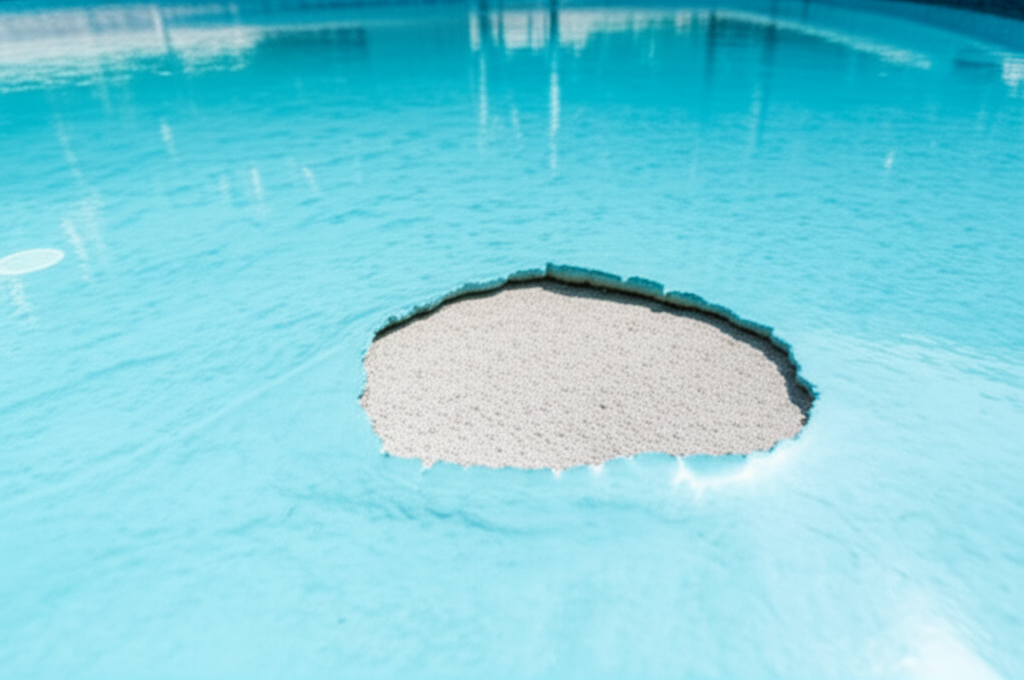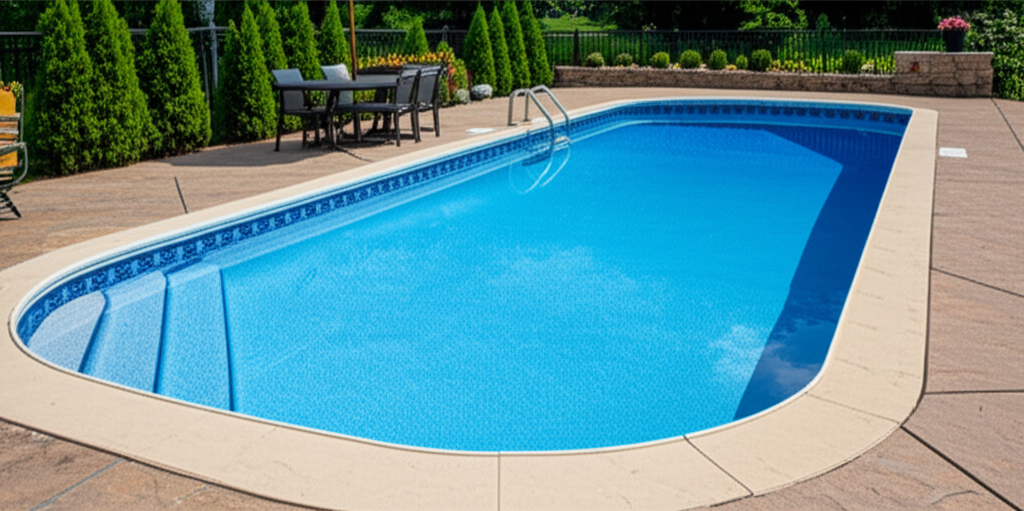- Understanding the Mechanics of Pool Plaster Delamination
- Common Causes of Pool Plaster Delamination
- Identifying Pool Plaster Delamination
- The Path to Flawless Repairs: Addressing Pool Plaster Delamination
- Preventing Future Pool Plaster Delamination
Pool Plaster Delamination is a concerning issue for any pool owner, signaling a fundamental flaw in the pool’s surface integrity. This phenomenon occurs when the plaster finish, which provides the smooth, aesthetic, and waterproof layer of your pool, separates from the underlying concrete shell. It’s more than just a cosmetic blemish; unaddressed delamination can lead to water intrusion, further structural damage, and a significantly diminished lifespan for your pool. Understanding its causes, identifying its signs, and executing flawless repairs are crucial steps to restoring your pool to its pristine condition.
Understanding the Mechanics of Pool Plaster Delamination
To effectively tackle pool plaster problems, it’s essential to grasp exactly what delamination entails. Imagine your pool’s plaster as multiple thin coats applied to the concrete shell, similar to layers of paint on a wall. Delamination happens when one or more of these layers, or the entire plaster coat itself, loses its adhesion to the layer beneath it or to the gunite/shotcrete shell. This separation creates a void, often manifesting as hollow spots, blisters, or even flaking and widespread detachment of the plaster.
The consequences extend beyond an unsightly appearance. These voids can trap water, leading to further degradation of the plaster from behind. In severe cases, delamination can compromise the pool’s waterproofing, potentially leading to leaks and damage to the surrounding deck or foundation.
Common Causes of Pool Plaster Delamination
Several factors, often working in concert, contribute to pool plaster delamination. Pinpointing the root cause is vital for preventing recurrence after repairs.
Substandard Surface Preparation: This is perhaps the most frequent culprit. If the existing substrate (old plaster or concrete shell) isn’t properly cleaned, etched, and free of dust, oils, or loose debris before new plaster is applied, the bond will be weak. A lack of proper bonding agents can also lead to poor adhesion.
Improper Plaster Mix: The ratio of cement, aggregate (like marcite or quartz), and water is critical. A mix that’s too wet or too dry, or one with incorrect aggregate proportions, can lead to a weak, porous, or brittle finish that fails over time.
Rapid Drying and Curing: Plaster requires a controlled curing process, ideally kept moist for several days after application. If the plaster dries out too quickly due to high temperatures, low humidity, or insufficient initial watering, it can shrink excessively and lose its bond.
Application Issues: Poor troweling techniques can leave air pockets or create cold joints (where fresh plaster is applied over partially cured plaster), leading to weak points where delamination can begin. Inadequate compaction during application can also contribute.
Substrate Imperfections: Cracks, movement, or previous repair failures in the underlying concrete shell can transfer stress to the plaster, causing it to delaminate.
Aggressive Water Chemistry: While less common as a direct cause of delamination, prolonged exposure to imbalanced water (especially water that is too aggressive or corrosive, meaning it’s “hungry” for calcium) can etch the plaster surface and weaken the outer layers, potentially accelerating existing delamination or creating new pathways for water intrusion behind the plaster.
Identifying Pool Plaster Delamination
Early detection is key to less extensive and more cost-effective repairs. Here’s how to identify delamination:
Visual Cues: Look for spiderweb cracks, a “blistering” appearance where parts of the plaster appear raised, or visible flaking and peeling. Discoloration or streaking can also indicate underlying issues.
The “Tap” Test: A common and effective method. Using a small, non-marring hammer or the end of a screwdriver handle, gently tap the plaster in various areas, especially those around cracks or perceived problem spots. Solidly bonded plaster will produce a “thud” sound, while delaminated areas will sound distinctly hollow.
Professional Inspection: If you suspect delamination but aren’t certain, or if it appears widespread, a professional pool contractor can typically perform a more thorough assessment, sometimes even using moisture meters or borescope cameras for difficult-to-reach areas.
The Path to Flawless Repairs: Addressing Pool Plaster Delamination
Achieving a lasting repair requires a meticulous approach, from initial assessment to final curing.
1. Thorough Assessment and Demolition:
The first step in any repair is to accurately identify the full extent of the delaminated areas. The pool must be drained. All loose, hollow-sounding, or visibly damaged plaster must be painstakingly removed, extending a few inches beyond the affected edges to ensure no weak points remain. This often involves chipping hammers, grinders, or specialized tools. The goal is to expose a clean, sound substrate.
2. Surface Preparation – The Foundation of Flawless Repairs:
Once the compromised plaster is removed, the exposed underlying surface (whether it’s the original gunite/shotcrete or previous plaster that’s still well-bonded) must be prepared for the new application. This typically involves:
Cleaning: Thoroughly pressure washing to remove all dust, debris, algae, and loose particles.
Etching/Roughening: The surface may need to be slightly roughened or etched (e.g., with an acid wash or mechanical grinding) to create a mechanical key for the new plaster to adhere to.
Bonding Agent Application: A high-quality bonding agent is crucial. This specialized primer creates a strong chemical bond between the old subsurface and the new plaster, minimizing the risk of future delamination. It’s applied evenly and allowed to tack up as per manufacturer instructions.
3. Patching and Re-Plastering Techniques:
Patching Small Areas: For isolated delamination, a matching patch of new plaster mix is carefully applied to the prepared area. Skilled technicians feather the edges seamlessly into the surrounding existing plaster, aiming for a perfectly smooth transition that’s virtually undetectable once cured and wet.
Full Re-Plastering: If delamination is extensive, a full re-plastering of the entire pool is typically the most durable and aesthetically pleasing solution. After complete removal of the old plaster and thorough surface preparation, a new, uniform layer of plaster is applied across the entire pool surface. This ensures consistent color, texture, and longevity.
Material Choice: The new plaster mix should be of high quality, correctly proportioned, and applied by experienced professionals to ensure evenness and proper compaction.
4. Critical Curing and Water Chemistry Management:
The repair isn’t complete when the plaster is applied. Proper curing is paramount. The newly applied plaster must be kept moist and cured slowly to achieve maximum strength and adhesion. This often involves filling the pool with water shortly after application and carefully managing the initial pool water chemistry. An aggressive initial fill water or improper start-up procedures can leach minerals from the fresh plaster, weakening it and potentially leading to surface issues or even future delamination. Balanced water chemistry from day one – maintaining proper pH, alkalinity, and calcium hardness – is essential for the longevity of the repair and the overall health of your pool plaster.
Preventing Future Pool Plaster Delamination
Prevention is always better than repair. To avoid future issues:
Professional Installation: Always use experienced, reputable pool plastering contractors who understand proper surface preparation, mix ratios, and application techniques.
Quality Materials: Insist on high-quality plaster materials and bonding agents.
Controlled Curing: Ensure the contractor follows best practices for plaster curing, including keeping it moist immediately after application.
Maintain Water Chemistry: Consistently monitor and balance your pool’s water chemistry. Pay particular attention to calcium hardness, pH, and total alkalinity to prevent corrosive water that can weaken plaster over time.
Regular Inspections: Periodically inspect your pool’s surface for any early signs of cracking, blistering, or hollow spots.
Addressing pool plaster delamination proactively and employing flawless repair techniques will not only restore your pool’s beauty but also extend its structural integrity and enjoyment for years to come. With the right approach and professional expertise, your pool can once again be the pristine oasis it was meant to be.



